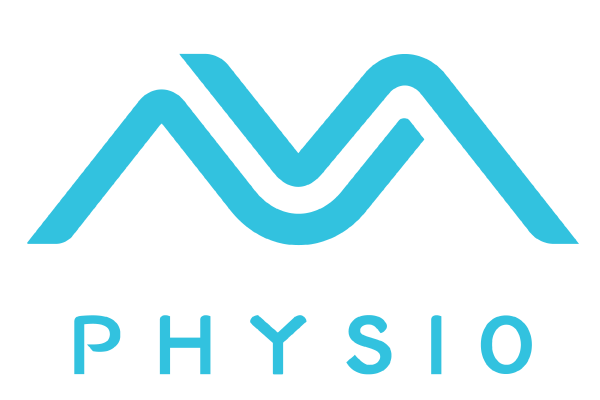Physiotherapy is an essential aspect of healthcare that aims to improve physical function, mobility and quality of life for individuals with injuries, disabilities, or chronic conditions. The role of technology in physiotherapy has become more critical than ever. In this article, we will discuss the latest trends and breakthroughs in innovative technology in physiotherapy and how it is transforming the field.
Current State of Technology in Physiotherapy
The use of technology in physiotherapy is not new, and many traditional methods such as ultrasound, electrical stimulation, and heat therapy have been used for decades. However, these methods have limitations in terms of standardization, objectivity, and patient engagement.
Traditional physiotherapy relies heavily on subjective evaluations, which can be influenced by various factors such as the therapist’s experience, patient’s motivation, and environmental factors. Moreover, traditional physiotherapy methods do not provide objective and quantitative data on patient progress, which can impede treatment planning and assessment.
To address these limitations, innovative technologies have been developed to enhance the effectiveness, efficiency, and safety of physiotherapy. These technologies include wearable devices, robotics, virtual reality, motion capture technology, and telehealth.
Real Time AI Feedback with Merlin Physio
With Merlin Physio, managing your patients’ progress becomes a breeze. You can effortlessly record their details, monitor their improvements, and avoid unnecessary delays that often hinder the healing process. No more digging through stacks of files or deciphering scribbled notes – everything you need is just a few taps away.
But that’s not all; Merlin Physio is not just a management tool; it’s a self-management app that empowers patients to take control of their health. We believe in preventing long-term health degradation by offering patients the means to track their own progress and make informed decisions.
Our user-friendly interface makes it easy for them to stay on top of their physiotherapy journey, resulting in better and more sustainable results.
One of the standout features of the Merlin Physio app is its real-time AI feedback. Patients receive instant guidance and advice based on their exercises and progress, ensuring they perform each movement correctly and safely. This not only enhances their recovery but also strengthens the patient-therapist relationship, as they feel supported every step of the way.
Emerging Technologies in Physiotherapy
1. Wearables
Wearable technology has gained popularity in recent years for its ability to monitor and enhance patient mobility, balance, and gait. Exoskeletons, electronic sensor skins, and instrumented insoles are among the most promising wearables that have been developed for physiotherapy.
Exoskeletons are wearable devices that assist with movement and provide support to patients with mobility impairments. They can be used for gait training, balance training, and muscle strengthening. Electronic sensor skins are thin, flexible, and stretchable sensors that can be attached to the skin to monitor various physiological signals such as muscle activity, heart rate, and respiration.
Instrumented insoles are shoe inserts that can measure gait parameters such as step length, step width, and foot pressure. They can be used to improve movement quality, adherence to weight-bearing restrictions, and personalize care before and after joint surgeries.
2. Robotics
Rehab robots are a type of robot that assists with cognitive and motor-skill therapy. They can provide resistance, assistance, and feedback to patients during therapy sessions. Rehab robots include roboticized arms, balance boards, and exosuits. They can be used to improve upper and lower limb function, balance, gait, and coordination. Major manufacturers in this field include Tyromotion and Hocoma.
3. Virtual Reality
Virtual reality (VR) technology can create immersive, interactive, and engaging environments for patients to practice functional activities and movements. VR can provide a safe and controlled environment for patients to practice challenging tasks and activities. It can also provide real-time feedback on patient performance and progress.
VR technology can be used for various applications such as balance training, gait training, and upper limb therapy. One study found that VR-based balance training improved balance and gait in patients with Parkinson’s disease.
3. Motion Capture Technology
Motion capture technology is a set of methods and tools used to track and analyze human movements and postures. It provides objective and quantitative data on patient movements, which can be used for diagnosis, treatment planning, and progress monitoring.
Motion capture technology can be used for various applications such as sports medicine, orthopedics, and neurology. One study found that motion capture technology can be used to assess the effects of different orthotic interventions on gait parameters in children with cerebral palsy.
4. Telehealth
Telehealth is a technology that enables remote communication and consultation between patients and therapists. It can reduce travel time and costs for patients, increase accessibility and convenience, and provide more frequent and timely feedback.
Telehealth can be used for various applications such as home-based exercise programs, remote monitoring, and tele-rehabilitation. One study found that telehealth-based physiotherapy reduced hospital readmissions and improved patient satisfaction and outcomes.
Benefits of Innovative Technology in Physiotherapy
The benefits of innovative technology in physiotherapy are numerous and significant. Innovative technology can enhance the effectiveness, efficiency, and safety of physiotherapy. It can also provide objective and quantitative data on patient progress, which can improve treatment planning and assessment. The benefits of innovative technology in physiotherapy include:
- 1. Personalization: Technology enables physiotherapy to become more tailored and adaptive to individual needs, preferences, and goals. Wearables, robotics, VR, motion capture technology, and telehealth can provide personalized and adaptive feedback and interventions.
- 2. Prevention: Technology can shift physiotherapy from a reactive to a proactive and preventive approach by identifying and addressing risk factors and promoting healthy behaviors. Wearables, telehealth, and motion capture technology can provide early detection and intervention for potential problems.
- 3. Integration: Technology can enhance the integration and collaboration between physiotherapy and other healthcare disciplines, such as sports medicine, orthopedics, and neurology. Telehealth, wearables, and motion capture technology can facilitate communication and data sharing between healthcare providers.
Innovative Technology-Assisted Physiotherapy
1. Instrumented insoles
Instrumented insoles are shoe inserts that can measure gait parameters such as step length, step width, and foot pressure. They can be used to improve movement quality, adherence to weight-bearing restrictions, and personalize care before and after joint surgeries.
2. VR-based balance training
VR-based balance training is a type of therapy that uses virtual reality technology to improve balance and gait in patients with Parkinson’s disease.
3. Telehealth-based physiotherapy
Telehealth-based physiotherapy is a type of therapy that uses telehealth technology to provide physiotherapy services to patients remotely.
Challenges of Innovative Technology in Physiotherapy
While innovative technology in physiotherapy has many benefits, it also poses several challenges. These challenges include:
- 1. Ethical, social, and economic implications: Innovative technology in physiotherapy raises ethical, social, and economic implications such as privacy, equity, and cost-effectiveness.
- 2. Privacy, equity, and cost-effectiveness: Innovative technology in physiotherapy should be accessible and affordable for all patients regardless of their socioeconomic status. Moreover, innovative technology should protect patient privacy and data security.
- 3. Research, education, and policy needs: To ensure the safety, efficacy, and sustainability of innovative technology in physiotherapy, more research, education, and policy needs are required to keep up with the rapid pace of technological advancements.
Future Directions of Innovative Technology in Physiotherapy
The future directions of innovative technology in physiotherapy are exciting and promising. Future directions include:
- 1. Advancements in wearables, robotics, VR, motion capture technology, and telehealth. These advancements will provide innovative and personalized interventions for patients.
- 2. Increasing personalization, prevention, and integration of innovative technology in physiotherapy. Personalization and prevention will become more critical in physiotherapy, and integration between physiotherapy and other healthcare disciplines will become more seamless.
- 3. Challenges and opportunities for innovative technology in physiotherapy. The challenges of innovative technology in physiotherapy will need to be addressed, and the opportunities for innovative technology in physiotherapy will need to be seized.
Conclusion
Innovative technology in physiotherapy has the potential to enhance recovery and performance for patients with injuries, disabilities, or chronic conditions. Wearables, robotics, VR, motion capture technology, and telehealth are among the most promising technologies that are transforming the physiotherapy landscape.
While innovative technology in physiotherapy has many benefits, it also poses several challenges, including ethical, social, and economic implications. To ensure the safety, efficacy, and sustainability of innovative technology in physiotherapy, more research, education, and policy needs are required.
As a company that provides a real-time feedback mobile app to measure improvement in physiotherapy exercises and care for patients recovering from an injury, we are committed to staying up-to-date with the latest trends and breakthroughs in innovative technology in physiotherapy to provide our patients with the best possible care.

